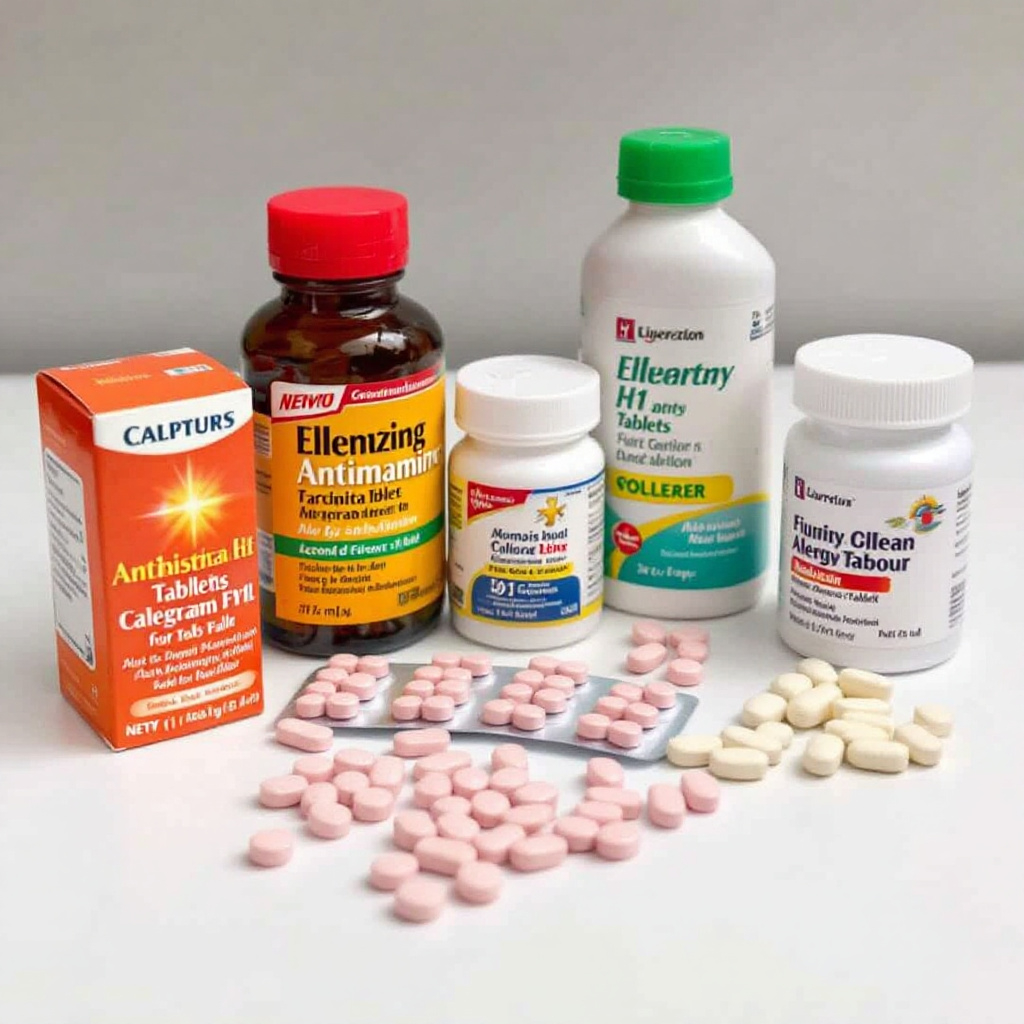Allergic reactions affect millions of people worldwide causing discomfort like sneezing, itching and hives. One of the most common treatments for these symptoms is the use of H1 antihistamines. But what exactly are they and how do they help?
What Are H1 Antihistamines?
H1 antihistamines are a class of medications that block the H1 histamine receptors in the body. These receptors are located throughout the respiratory tract skin and blood vessels and are responsible for the symptoms caused by allergic reactions.
When an allergen triggers the immune system histamine is released. It binds to H1 receptors causing inflammation and allergy symptoms. H1 antihistamines block this binding preventing or reducing allergic responses.
Uses of H1 Antihistamines
H1 antihistamines are commonly used to treat:
- Seasonal and perennial allergic rhinitis (hay fever)
- Urticaria (hives)
- Atopic dermatitis
- Conjunctivitis (eye allergies)
- Insect bite reactions
- Anaphylaxis (as a secondary treatment)
Types of H1 Antihistamines
H1 antihistamines are divided into two major generations:
First Generation H1 Antihistamines
- Easily cross the blood brain barrier
- Often cause drowsiness
- May also be used for nausea or sleep
Examples:
- Diphenhydramine (Benadryl)
- Chlorpheniramine
- Hydroxyzine
- Brompheniramine
Second Generation H1 Antihistamines
- Do not easily enter the brain
- Less likely to cause sedation
- Longer duration of action
Examples:
- Loratadine (Claritin)
- Cetirizine (Zyrtec)
- Fexofenadine (Allegra)
- Levocetirizine (Xyzal)
How Do H1 Antihistamines Work?
H1 antihistamines bind to the H1 receptors instead of histamine. This blocks the histamine’s effect stopping the chain reaction that leads to:
- Nasal congestion
- Itchy or watery eyes
- Skin redness and irritation
- Sneezing
The result is fast and effective relief from allergic symptoms.
Benefits of H1 Antihistamines
- Quick symptom relief
- Multiple forms available (tablets liquids eye drops creams)
- Widely available over the counter (OTC)
- Safe for both children and adults (with proper dosage)
Side Effects and Precautions
Though generally safe H1 antihistamines can cause:
First generation side effects:
- Drowsiness
- Dry mouth
- Dizziness
- Constipation
Second generation side effects (rare):
- Headache
- Fatigue
- Nausea
Precautions:
- Avoid alcohol when using sedating antihistamines
- Consult a doctor if you are pregnant breastfeeding or have liver kidney issues
Choosing the Right H1 Antihistamine
- For nighttime use or severe itching: first generation types
- For daily use or if alertness is needed: second generation types
- For eye allergies: antihistamine eye drops like ketotifen
- For children: always check with a pediatrician
H1 Antihistamines vs. H2 Antihistamines
| Feature | H1 Antihistamines | H2 Antihistamines |
|---|---|---|
| Primary Use | Allergy symptoms | Acid reflux, ulcers |
| Receptor Blocked | H1 | H2 |
| Common Medications | Loratadine, Cetirizine | Ranitidine, Famotidine |
Conclusion
H1 antihistamines are a cornerstone in the treatment of allergies offering quick and effective relief for a wide range of symptoms. Whether you opt for a first or second generation drug depends on your needs and sensitivity to side effects. As always consult your healthcare provider for the best advice on which option is right for you.
